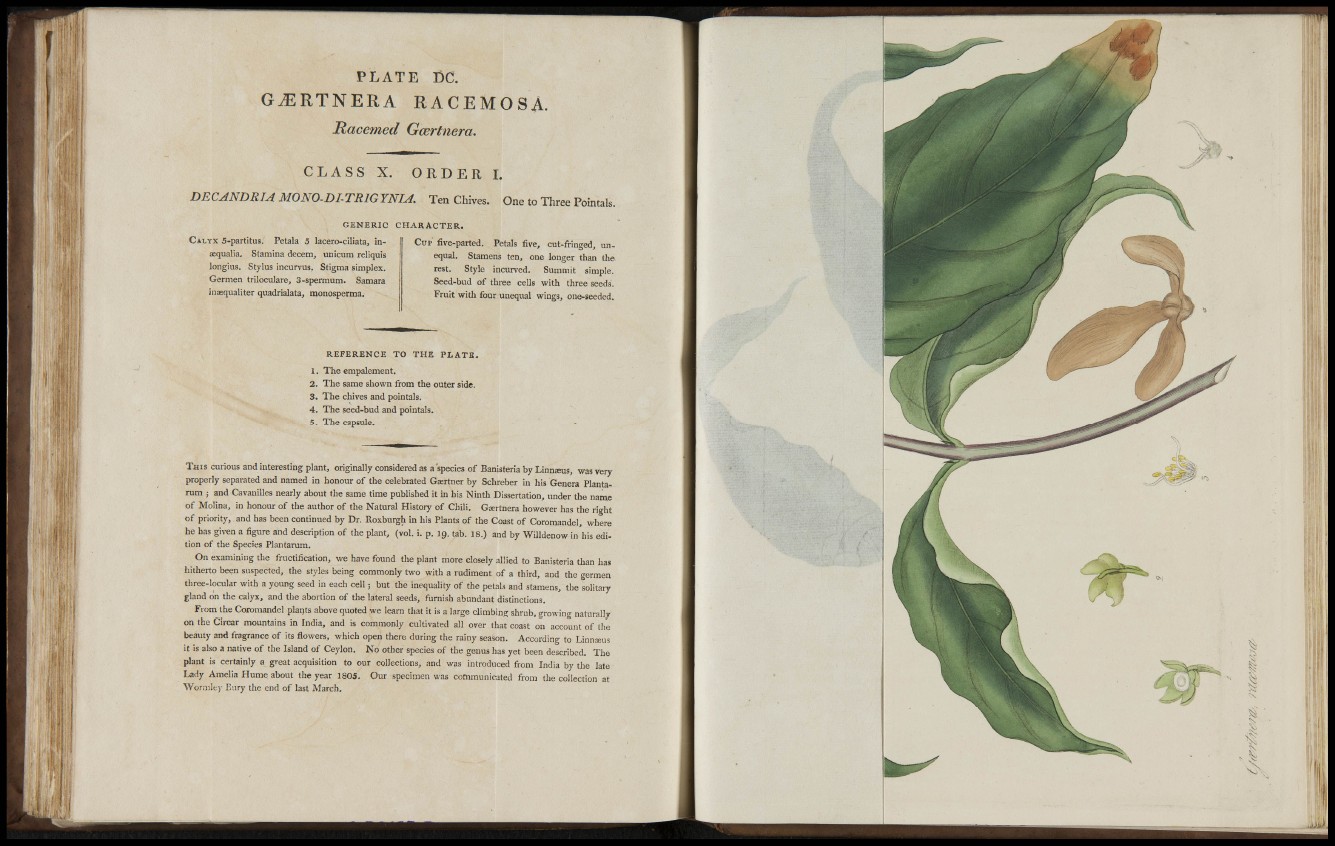
m
M !!
ï •
PLATE DC.
G ^ R T N E R A RACEMOSA.
Racemed Goertnera.
CLASS X. ORDER L
DECANDRIA MONO-DI-TRIG YNIA. Ten Chives. One to Three Pointals.
GENERIC CHARACTER.
CALYX 5-partitus. Pelala 5 lacero-ciliata, insequalia.
Stamina decern, unicum reliquis
longius. Stylus incurvus. Stigma simplex.
Germen triloculare, 3-spermum. Samara
inasqualiter quadrialata, monosperma.
CUP five-parted. Petals five, cut-fringed, unequal.
Stamens ten, one longer than the
rest. Style incurved. Summit simple.
Seed-bud of three cells with three seeds.
Fruit with four unequal wings, one-seeded.
REFERENCE TO THE PLATE.
1. The empalement.
2 . The same shown from the outer side.
3. The chives and pointals.
4 . The seed-bud and pointals.
5 . The capsule.
THIS curious and interesting plant, originally considered as a'species of Banisteria by Linnaeus, was very
properly separated and named in honour of the celebrated Gsertner by Schreber in his Genera Plantarum
; and Cavanilles nearly about the same time published it in his Ninth Dissertation, under the name
o f Molina, in honour of the author of the Natural History of Chili. Gaertnera however has the right
o f priority, and has been continued by Dr. Roxburgh in his Plants of the Coast of Coromandel, where
he has giwn a figure and description of the plant, (vol. i. p. 19. tab. 18.) and by Willdenow in'his edition
of the Species Plantarum.
On examining the fructification, we have found tlie plant more closely allied to Banisteria than has
hitherto been suspected, the styles being commonly two with a rudiment of a third, and the germen
three-locular with a young seed in each cell; but the inequality of the petals and stamens, the solitary
gland on the calyx, and the abortion of the lateral seeds, furnish abundant distinctions.
Fvom the Coromandel plants above quoted we learn that it is a large climbing shrub, grow ing naturally
on the Circar mountains in India, and is commonly cultivated all over that coast on account of the
beauty and fragrance of its flowers, which open there during the rainy season. According to Linnaeus
it is also a native of the Island of Ceylon. No other species of the genus has yet been described. The
plant is certainly a great acquisition to our collections, and was introduced fiom India by the late
Lady Amelia Hume about the year 1805. Our specimen was communicated from the collection at
Wormley Bury the end of last March,
\
V ,
i - '
V
Ì
I •X
I I
I !.;
Ili. ;
liiU:
liiy:
i:;
I'm--
I., , ;:
I, !r •
I .MÈ